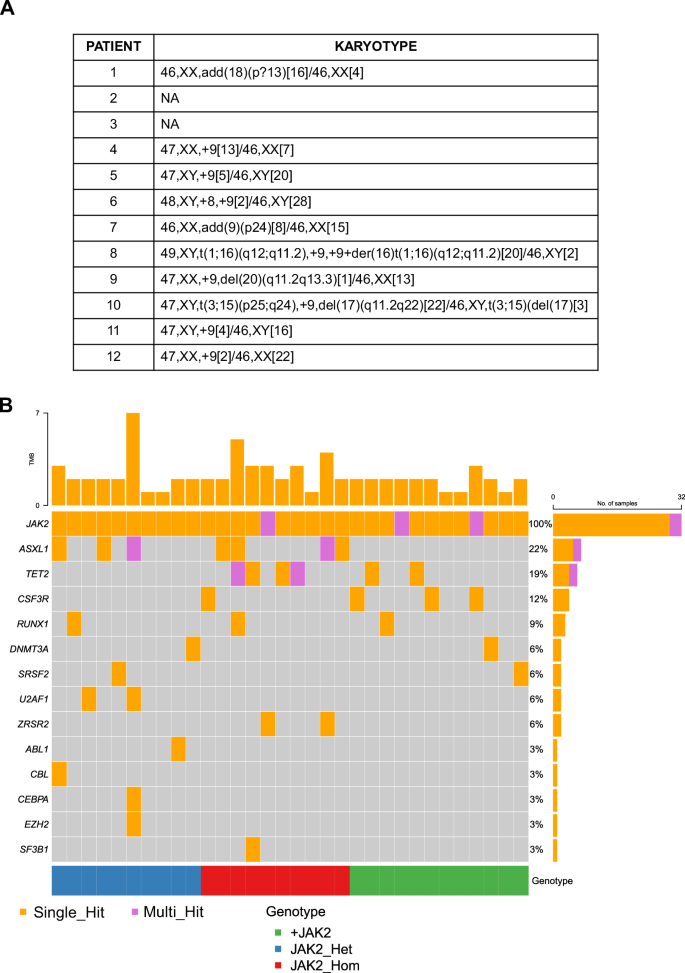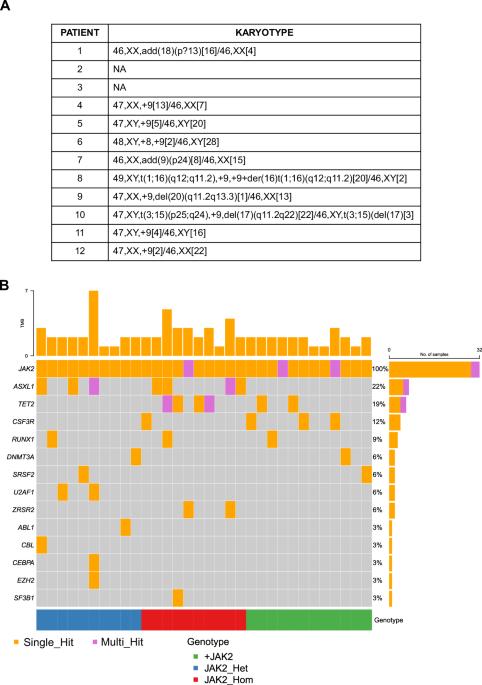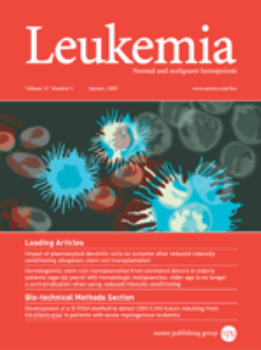在JAK2突变骨髓增殖性肿瘤中,染色体9p三体综合征会增加干细胞的克隆生成潜能并促进T细胞衰竭
IF 12.8
1区 医学
Q1 HEMATOLOGY
引用次数: 0
摘要
JAK2V617F是费城阴性慢性骨髓增生性肿瘤(MPN)中最常见的基因突变。由于 JAK2 基因座位于第 9 染色体上,我们推测第 9 染色体拷贝数异常可能是 JAK2V617F 突变的骨髓增殖性肿瘤患者的疾病调节因子。在这项研究中,我们发现了部分或全部 9 号染色体三体的 MPN 患者亚群(+9p 患者),他们与 JAK2V617F 杂合子 MPN 患者不同,因为他们携带三个 JAK2 等位基因以及所有邻近基因位点的三个拷贝,包括编码免疫抑制性程序性死亡配体 1(PD-L1)蛋白的 CD274。对克隆层次的调查显示,JAK2V617F首先出现,其次是+9p。从功能上讲,由于 OCT4 和 NANOG 的高表达,来自 +9p MPN 患者的 CD34+ 细胞显示出更强的克隆生成性,产生了更多的原始集落,而敲除这些基因会导致基因型特异性的集落数量减少。此外,我们的分析还发现,+9p 患者的恶性单核细胞中 PD-L1 表面表达增加,而对 T 细胞区系的分析则揭示了细胞毒性 T 细胞衰竭水平的升高。总之,我们在此发现了一个与众不同的新型MPN患者亚群,他们具有+9p和JAK2V617F之间的协同作用,从而形成了免疫逃逸特征和CD34+细胞的干性增加。本文章由计算机程序翻译,如有差异,请以英文原文为准。


Chromosome 9p trisomy increases stem cells clonogenic potential and fosters T-cell exhaustion in JAK2-mutant myeloproliferative neoplasms
JAK2V617F is the most recurrent genetic mutation in Philadelphia-negative chronic Myeloproliferative Neoplasms (MPNs). Since the JAK2 locus is located on Chromosome 9, we hypothesized that Chromosome 9 copy number abnormalities may be a disease modifier in JAK2V617F-mutant MPN patients. In this study, we identified a subset of MPN patients with partial or complete Chromosome 9 trisomy (+9p patients), who differ from JAK2V617F-homozygous MPN patients as they carry three JAK2 alleles as well as three copies of all neighboring gene loci, including CD274, encoding immunosuppressive Programmed death-ligand 1 (PD-L1) protein. Investigation of the clonal hierarchy revealed that the JAK2V617F occurs first, followed by +9p. Functionally, CD34+ cells from +9p MPN patients demonstrated increased clonogenicity, generating a greater number of primitive colonies, due to high OCT4 and NANOG expression, with knock-down of these genes leading to a genotype-specific decrease in colony numbers. Moreover, our analysis revealed increased PD-L1 surface expression in malignant monocytes from +9p patients, while analysis of the T cell compartment unveiled elevated levels of exhausted cytotoxic T cells. Overall, here we identify a distinct novel subgroup of MPN patients, who feature a synergistic interplay between +9p and JAK2V617F that shapes immune escape characteristics and increased stemness in CD34+ cells.
求助全文
通过发布文献求助,成功后即可免费获取论文全文。
去求助
来源期刊

Leukemia
医学-血液学
CiteScore
18.10
自引率
3.50%
发文量
270
审稿时长
3-6 weeks
期刊介绍:
Title: Leukemia
Journal Overview:
Publishes high-quality, peer-reviewed research
Covers all aspects of research and treatment of leukemia and allied diseases
Includes studies of normal hemopoiesis due to comparative relevance
Topics of Interest:
Oncogenes
Growth factors
Stem cells
Leukemia genomics
Cell cycle
Signal transduction
Molecular targets for therapy
And more
Content Types:
Original research articles
Reviews
Letters
Correspondence
Comments elaborating on significant advances and covering topical issues
 求助内容:
求助内容: 应助结果提醒方式:
应助结果提醒方式:


